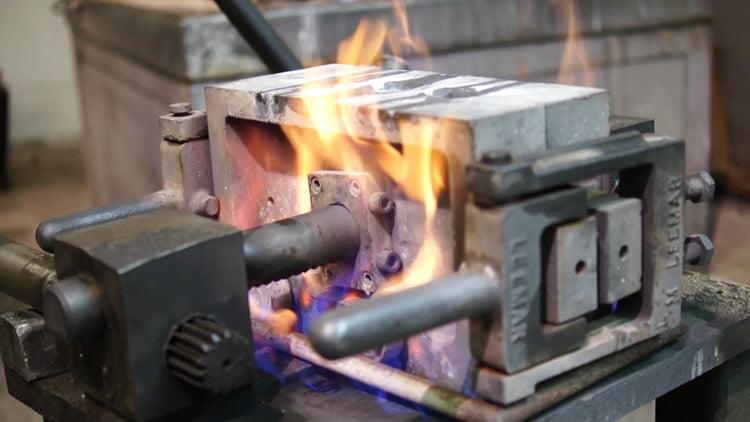An Overview Of The Sand Casting Process
Published - 21st Aug 2014
The casting of metals is the manufacturing process in which liquid metal is poured into a mould, which contains a hollow cavity of the desired shape.
The solidified part is then removed from the mould and finished to complete the process.
 Over 70% of all metal castings are made using a sand casting process.
Over 70% of all metal castings are made using a sand casting process.
Haworth Castings is a good example of a foundry that specialises in sand castings, using recycled sand mixed with a hardening agent to form the mould.
The key steps in the sand casting process are summarised below.
Pattern Manufacture
A new casting will require a pattern to be produced. Made out of resin, the pattern is not an exact geometrical copy of the finished casting and is created by specialist engineers using original electronic design files of the component. Patterns are made slightly larger than the finished casting to allow for metal contraction during cooling.
Moulding Boxes
Once created the pattern is placed into its own wooden moulding box, and is now ready to be filled with sand. The sand is mixed with a hardening agent and forms a solid mould around the pattern. A typical moulding box has a top, known as the cope, and a bottom known as the drag. The now hardened sand moulds are then removed by machine or hand from their wooden boxes and joined together to form a closed casting cavity.
Cores
If apertures are required within a casting, sand cores are manufactured separately using a core box manufactured out of resin (or metal for shell cores). Cores are inserted into the sand mould after the removal of the wooden moulding box but before the cope and drag are assembled. Cores are located in the sand mould by the use of core prints.
Running System
To enable the molten metal to travel to the casting cavity, a running system is designed and incorporated into the pattern which is in turn then replicated in the sand mould. Molten metal enters the sand mould through a dypur or down sprue, and passes through a filter before entering the cavity. The molten metal then fills the cavity and the risers assist in feeding the metal during pouring.
The Pour
Often considered the most critical element of the casting process, the pour refers to the gravity feed of molten metal into the sand mould. Traditionally poured by hand using ladles the molten metal must enter the sand mould at the correct pouring temperature in order to reach all parts of the cavity. Flow is regulated by the filter which also acts to remove any impurities that might compromise the finished casting integrity. To allow for shrinkage during cooling a reservoir of molten metal is provided by the risers which is part of the built in running system. Test bars and dabs are produced during pouring for internal analysis to check on the metal composition for material certification.
Finishing
Once cooled the casting is released from its sand mould in the re-claim sand area. In modern foundries the sand is reclaimed with all residual chemicals removed. The now free casting is still attached to the solidified running system which is then cut-off in the finishing department. The casting is then shot-blasted to prove its surface integrity before being linished and fettled to customer requirements.
To learn more about Haworth Castings aluminium and copper based sand casting capabilities please email sales@haworthcastings.co.uk or call +44 (0) 1794 512685
Follow Andrew Haworth on Google+!

 Over 70% of all metal castings are made using a sand casting process.
Over 70% of all metal castings are made using a sand casting process.


